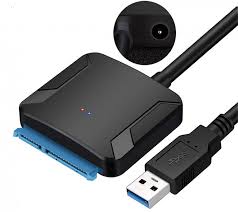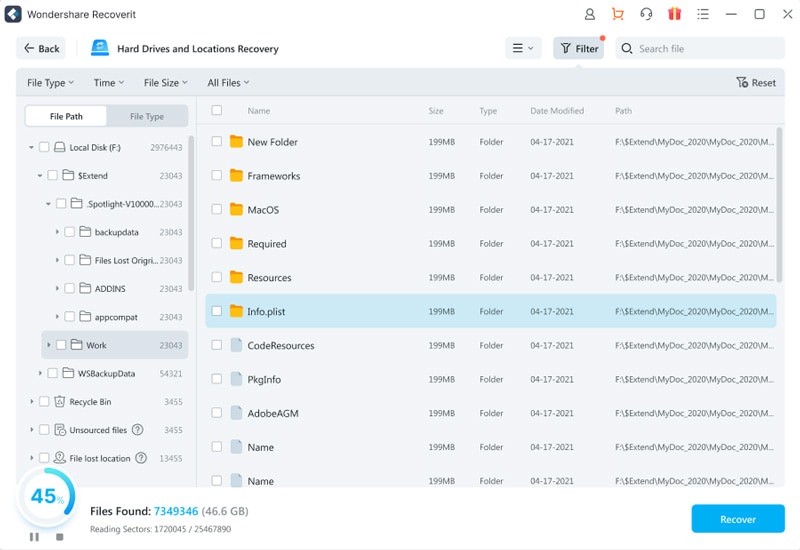Agree or not, Solid-state drives (SSDs) have changed how we store digital information, providing very fast performance and better reliability than older hard disk drives (HDDs).
But, the special way SSDs work can make data recovery more difficult.
In this detailed guide, we'll look at the complexities of recovering data from SSDs. We will also give you the important steps to recover deleted files from SSD drive easily, whether it's from a broken SSD or files you accidentally deleted.
Let’s get started.
Try Wondershare Recoverit to Perform SSD Data Recovery

In this article
Overview of SSD Drive
SSDs are digital storage devices that store their data in flash memory, unlike traditional HDDs, which store data on spinning magnetic platters. SSDs hold an array of advantages over HDDs, such as faster read/write speeds, lower power consumption, and improved durability from having no moving parts.
However, recovery in SSDs is pretty different from the process in HDD. Algorithms for wear leveling and deletion of data that are part of SSD technology significantly complicate the recovery of lost or deleted data. Moreover, the use of TRIM technology in contemporary operating systems further complicates the recovery process.
There may be recovery of data from an SSD, which is either dead or failed; from a working SSD, recovering deleted files; and even in some cases, recovering an SSD that is partially corrupted or damaged. Understanding these scenarios is very important when approaching SSD data recovery.
Common Causes of Data Loss in SSD Drives
Data loss in SSD drives can occur due to a variety of reasons, including:
- Accidental file deletion
- Firmware or software crashes
- Physical damage to the SSD
- Logical errors or file system corruption
- Malware or virus infections
- Unexpected power outages or system crashes
Recognizing these common causes of data loss is the first step in understanding the appropriate recovery methods to employ. Now, let’s learn about how to recover deleted files from SSD Drives.
How to Recover Data from SSD Drive
In this section of our article, we have listed two simple methods to recover data from SSD Drives.
Method 1: Recover Data from Dead SSD
If your SSD has completely failed or is unresponsive, you can attempt to recover data by connecting it to another computer as a data disk. Here's a step-by-step guide on data recovery from SSD hard disk.
Step 1: Shut down the computer and disconnect the failed SSD. Connect the dead, failed SSD to another working computer using a USB adapter or SATA cable.

Step 2: If the SSD is recognized by the computer, you can use data recovery software, such as Recoverit, to scan the drive and recover the lost data.
Step 3: If the SSD is not recognized, you may need to seek the help of a professional data recovery service.
Method 2: Recover Data from SSD Drive with Recoverit
Recoverit is a powerful software that can help you easily recover your lost or deleted data from your SSD drive. It's designed to be user-friendly, so even if you're not tech-savvy, you can still use it to get your files back.
Recoverit has some really advanced features that make it great for SSD data recovery. It can recover over 1,000 different file types, including documents, photos, videos, and more. It can work with all kinds of storage devices, not just SSDs, but also hard drives, memory cards, and USB drives.
Recoverit has two different scan options - a quick scan and a deep scan. The quick scan is faster and can find the easy-to-find files, while the deep scan goes more in-depth to find files that are harder to locate. You can preview the files before you recover them, so you know exactly what you're getting back.
Recoverit's advanced data recovery capabilities include:
- Supports recovery of over 1000+ file types, including documents, photos, videos, and more
- Recover data from various storage devices, including SSDs, HDDs, memory cards, and USB drives
- Offers deep scan and quick scan options to locate lost or deleted files
- Provides a user-friendly interface for a seamless recovery process
Here's how to recover data from SSD drive using Recoverit:
Step 1: Install Recoverit on your computer. Connect the SSD drive to your computer and open up Recoverit. Recoverit will show you a list of all the storage devices connected to your computer. Select the SSD drive from the list.

Step 2: Recoverit will scan the SSD drive and show you all the files it found that can be recovered.

Step 3: Preview the files to make sure they're the ones you want, then click the "Recover" button to save them to a safe location on your computer.

It's really that simple! Recoverit makes recovering data from an SSD drive easy, even if you've never done it before. Just follow the steps, and you'll be able to get your important files back in no time.
Tips & Notes for SSD Recovery
- Avoid using the SSD drive further to prevent overwriting of data.
- Disconnect the SSD drive from the computer immediately if you suspect data loss.
- Consider using a write-blocker to prevent any accidental data modification during the recovery process.
- Regularly back up your SSD to mitigate the impact of future data loss incidents.
- If the SSD is severely damaged or unresponsive, seek the assistance of a professional data recovery service.
Conclusion
Recovering data from an SSD drive can be a delicate process, but with the right tools and techniques, it is entirely possible. By understanding the unique challenges of SSD data recovery and following the steps outlined in this guide, you can successfully recover your lost or deleted files, whether it's from a failed SSD or a simple case of accidental deletion.
FAQs
-
Is it possible to unerase data from a solid-state SSD drive?
Yes, it is possible to recover deleted or lost data from an SSD drive using specialized data recovery software like Recoverit. The key is to act quickly and avoid further use of the SSD to prevent data overwriting. -
Can Data Be Recovered From a Failing SSD?
Yes, in many cases, data can be recovered from a failing or partially damaged SSD drive. The recovery process may involve connecting the SSD to a different computer or using professional data recovery services, depending on the extent of the damage. -
How to Preserve SSD Drive Health?
To maintain the health of your SSD drive and minimize the risk of data loss, it's essential to follow best practices, such as: 1.Avoid excessive write operations; 2.Enable TRIM support in your operating system; 3.Regularly back up your data to an external storage device; 4.Avoid defragmentation and other operations that can wear down the SSD.




 ChatGPT
ChatGPT
 Perplexity
Perplexity
 Google AI Mode
Google AI Mode
 Grok
Grok























